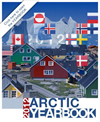Introducing Joël Plouffe
 Joël Plouffe is a Research Fellow at the Raoul-Dandurand Chair of Strategic and Diplomatic Studies at the Université du Québec à Montréal (UQAM). He is also a Canadian Defence & Foreign Affairs Institute Fellow (CDFAI), and is a US State Department International Visiting Program Alumni (IVLP Arctic Security 2012). His research interests and publications deal mainly with the Geopolitics of the Arctic, Regions of the Circumpolar North, Security, Defence, US-Canada Foreign Policy, and International Relations.
Joël Plouffe is a Research Fellow at the Raoul-Dandurand Chair of Strategic and Diplomatic Studies at the Université du Québec à Montréal (UQAM). He is also a Canadian Defence & Foreign Affairs Institute Fellow (CDFAI), and is a US State Department International Visiting Program Alumni (IVLP Arctic Security 2012). His research interests and publications deal mainly with the Geopolitics of the Arctic, Regions of the Circumpolar North, Security, Defence, US-Canada Foreign Policy, and International Relations.
 Mr Plouffe is currently serving as Visiting Professor at the Jackson School for International Studies (JSIS) at the University of Washington in Seattle, where he co-teaches a Task Force on Arctic Security for the 2013 winter quarter.
Mr Plouffe is currently serving as Visiting Professor at the Jackson School for International Studies (JSIS) at the University of Washington in Seattle, where he co-teaches a Task Force on Arctic Security for the 2013 winter quarter.
Mr Plouffe is involved in various northern affairs related research groups and programs. He is a member of the Northern Research Forum Thematic Network on Geopolitics and Security, led by Dr Lassi Heininen from the University of Lapland (Finland); is actively involved in the annual Calotte Academy that takes place in the Barents Euro-Arctic Region; is project member of ArcticNet’s research group on Climate Change and Commercial Shipping in the Arctic, led by Dr Frédéric Lasserre of Université Laval in Québec City (Canada); and is Managing Editor of the Arctic Yearbook.
In August 2012, Joël Plouffe was embedded with Canada’s National Defence and Canadian Forces in the Western Arctic (Northwest Territories) during the annual ‘Operation Nanook’. Joël Plouffe was born in the mining town of Sudbury, in Northern Ontario, Canada, and is now living in Montréal, Québec where he is working on his PhD thesis at the Department of Political Science of UQAM, looking at how the Arctic has influenced US foreign policy making from the Nixon presidency to President Barack Obama’s first mandate.
The interview with Joël Plouffe about the Arctic consists of two other parts as well:
Interview
Arctic Council, Circumpolar Governance, Environmental Cooperation
Why has it proven to be difficult for the 8 countries that are located north of the Arctic Circle (Canada, Denmark/Greenland, Finland, Iceland, Norway, Russia, Sweden, United States) to cooperate on Arctic matters?
Cooperation has actually been very strong between Arctic countries since the end of the Cold War. Last October marked the 25th anniversary of the historic ‘Murmansk Speech’ (or ‘Murmansk Initiative’) delivered by the President of the USSR Mikhaïl Gorbachev who outlined a strategy to promote the region as a “zone of peace”. In his words, “the North of the globe, the Arctic, [should] become a zone of peace,” with “a radical lowering of the level of military confrontation in the region.” In the waning years of the Cold War, Gorbachev insisted that “it is appropriate to examine the idea of cooperation between all people […] in the northern part of this planet,” a position that was also consistent with the US national interest. Indeed, Washington had released earlier in 1983 its first Arctic Policy document (through a National Security Decision Directive signed by President Ronald Reagan) that established the “promotion of mutually beneficial international cooperation in the Arctic” as a US foreign policy objective (NSDD-90, 1983).
Today, public commentary about Russia’s flag planting on the seabed at the North Pole in August 2007 has led to various (and often inaccurate) interpretations about the geopolitics of the Arctic. Following that highly mediatized flag-planting stunt, that prompted a surge of interest in the Arctic and made way to a new kind of Cold War rhetoric based on perceived concerns of an emerging ‘race’ for untapped natural resources in the melting Arctic, a joint statement called the Ilulissat Declaration was released in 2009 by the five littoral states of the central Arctic Ocean – Canada, Denmark, Norway, the Russian Federation and the United States – who made clear they will continue to comply with the law of the sea (UNCLOS) when establishing the full extent of their respective Extended Continental Shelves (ECS) in the Arctic (in conformity with Article 76 of UNCLOS which provides the legal framework for coastal states to measure and extend their continental shelves, where future extractive activities could eventually take place). The Declaration states that “The five coastal states currently cooperate closely in the Arctic Ocean with each other and with other interested parties. This cooperation includes the collection of scientific data concerning the continental shelf, the protection of the marine environment and other scientific research. We will work to strengthen this cooperation, which is based on mutual trust and transparency, inter alia, through timely exchange of data and analyses.”
Major efforts have been made by the eight Arctic states (coastal and not) since the end of the Cold War to create solid (albeit flexible) frameworks for regional governance in the circumpolar world. The Arctic Council (AC) is one of the most mentioned examples of tailored governance between the Arctic states. Created in 1996, the AC is a high-level and intergovernmental forum for Arctic governments and permanent participants (indigenous groups) designed to “promote cooperation, coordination and interaction among the Arctic states with the involvement of the Arctic indigenous communities and other Arctic inhabitants on common Arctic issues, in particular issues of sustainable development and environmental protection in the Arctic” (Ottawa Declaration, 1996). Correspondingly, the AC Rules of Procedure (adopted in 1998) specify that all decisions of the Council “shall be by consensus of all eight Arctic States” (Arctic Council, SAO Report on Rules of Procedure). University of Lapland Professor Timo Koivurova has published a must-read scholarly article on the “Limits and Opportunities of the Arctic Council in a rapidly changing scene of Arctic Governance” (Koivurova, 2009).
The AC as the prominent forum for circumpolar cooperation saw the day because concrete steps to engage regional cooperation had been taken some years earlier, following the Gorbachev ‘Murmansk Speech’. Established in 1991, the Arctic Environmental Protection Strategy (initiated in 1989 by the Finnish government through the ‘Rovaniemi Process’) preceded the AC and was a multilateral non-binding agreement that set the stage for environmental cooperation in the Arctic by a group of states who were “concerned with threats to the Arctic environment and the impact of pollution on fragile Arctic ecosystems” (AEPS). The AEPS eventually evolved into the AC, mainly to offer a stronger voice and status to indigenous representatives of the Arctic, called ‘Permanent Participants’ of the AC (who have the right to participate actively in all AC meetings and activities).
Other northern forums have emerged after the Cold War to foster international cooperation between Arctic states, like the Barents Euro-Arctic Council (part of the Barents-Euro Arctic Region or BEAR) who celebrates its 20th anniversary this year (Plouffe, 2012). Created in 1993 (by the Kirkenes Declaration between Finland, Iceland, Norway, Sweden, the Russian Federation and the European Commission), the BEAR framework has lead to the decrease of military tensions in the region and increased stability between the Nordic countries, the EU and Russia. The Government of Canada has produced a full list of the organizations involved in circumpolar cooperation and governance over the last 50 years (see Williams, 2008).
The other parts of the interview with Joël Plouffe
Please have a look at these pages for more insights of Joël Plouffe into the Arctic:
Joël Plouffe: Arctic Disputed Maritime Boundaries, Norway-Russia Border Treaty
Joël Plouffe: Arctic Claims of EU, China and India; Resource Exploration/Exploitation
